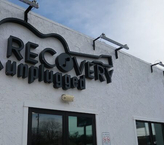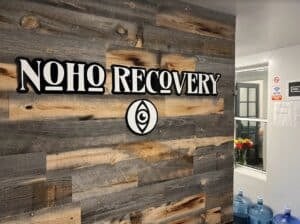Oxycodone Withdrawal And Detox
What Is Oxycodone Withdrawal?
Oxycodone is a potent Opioid found in common prescription Opiates. Over time, Oxycodone users develop a tolerance to the drug and they need higher doses to achieve the same effects.
Once a dependence on Oxycodone has developed, quitting the drug will result in uncomfortable, and potentially painful, withdrawal symptoms. Some people relapse during Oxycodone withdrawal because the symptoms are too intense. Others continue using Oxycodone just to feel “normal” and avoid withdrawal.
An inpatient or outpatient treatment program and medical detox can help Oxycodone users reach sobriety safely and successfully. Contact a treatment provider for help finding treatment.
Online Addiction Counseling
Get professional help from an online addiction and mental health counselor from BetterHelp.
- Access to Therapy 24/7
- Easy Online Scheduling
- 20,000+ Licensed Therapists
Paid Advertising. We may receive advertising fees if you follow links to the BetterHelp site.
Symptoms Of Withdrawal
Symptoms of withdrawal usually arise within 8-12 hours of the last dose. Less frequent users may experience less intense withdrawal symptoms than chronic, heavy Oxycodone users. Generally, Oxycodone withdrawal symptoms are flu-like, and are similar to those of Heroin withdrawal.
Common symptoms of Oxycodone withdrawal include:
- Nausea and vomiting
- Fatigue
- Depression
- Coughing
- Diarrhea
- Runny nose
- Teary eyes
- Sweating
- Anxiety
- Shaking
- Increased heart rate
- Body aches and pains
- Irritability
- Poor concentration
- Mood swings
- Inability to feel pleasure
Because Oxycodone is the active ingredient in these painkillers, the symptoms of Percocet withdrawal and OxyContin withdrawal will be very similar.
Duration Of Withdrawal
The duration of withdrawal from Oxycodone is different for each user. How long Oxycodone withdrawal lasts is determined by a number of factors, including:
- How long the individual has been using Oxycodone
- How much Oxycodone they took each time
- How frequently they took Oxycodone
- Whether they mixed Oxycodone with alcohol or other drugs
- Their mental health and medical history, including gender and weight
- How they took Oxycodone (snorting, injecting, eating, etc.)
Withdrawal symptoms typically appear 8-12 hours after the last dose. Once withdrawal symptoms set in, they can last anywhere from a few days to a week. In most cases, they peak within 72 hours and gradually subside. Also, the most intense psychological and physical withdrawal symptoms, also known as acute withdrawal, usually last up to one week.
Symptoms that last longer than a week are known as post-acute withdrawal symptoms (PAWS). PAWS can last up to 18-24 months, however they do slowly subside after a period of time as the individual learns to manage and cope with them. Common PAWS include poor concentration, increased anxiety, depression, inability to feel pleasure, lack of energy, mood-swings, irritability, agitation, and poor sleep.
Featured Centers Offering Detox from Oxycodone


Oxycodone Withdrawal Timeline
| Days 1-2 | Withdrawal usually begins 8-12 hours after the last dose. Some of the first symptoms of withdrawal include muscle and joint aches, nausea, cravings, irritability, headaches, restlessness, rapid breathing, appetite loss, fatigue, anxiety, pupil dilation, involuntary tear secretion, runny nose, and extreme sweating. Relapse is most common during this window. |
|---|---|
| Days 3-5 | The worst symptoms of withdrawal usually occur a few days after the last dose. Muscle aches are still common, and nausea and vomiting are often present. Shaking and cramps can happen during this time. |
| Days 6-7 | As the physical symptoms start to slow, the psychological ones are stronger than ever. The tail end of withdrawal leads to anxiety and depression, among other remaining physical symptoms like nausea and diarrhea. |
| Days 8+ | Once the Oxycodone has been detoxed from the body, many former users will feel remorse for things they did while high. The psychological impact of overcoming an Oxycodone addiction should be carefully monitored to avoid drastic decisions or relapse. |
Looking for a place to start?
Join the thousands of people that have called a treatment provider for rehab information.
Free and confidential
Available 24/7
Access to professional treatment
Oxycodone Detox
Oxycodone withdrawal can be painful and uncomfortable. A gradual reduction of the drug is often the most comfortable and effective way to detox. The gradual reduction of the Oxycodone in detox is usually done within an Opioid treatment program (OTPs) and is called Medication Assisted Treatment (MAT). This is also an option for longer-term medication maintenance for individuals with histories of chronic relapse.
Common MAT medications include Suboxone or Subutex. Upon completion of detox, Naltrexone is proven to be a beneficial medication to assist with decreasing cravings and enhancing the individual’s probability of remaining sober. There are also once per month IV shots of Naltrexone, called Vivitrol, that are beneficial for clients who struggle with medication management.
Tapering off the user’s dosage typically produces less severe withdrawal symptoms than abruptly quitting the drug.
During detox, many doctors and clinicians prescribe special medications to help with specific withdrawal symptoms. These medications work by making the brain believe it’s still getting Oxycodone. This also prevents or reduces the severity of many symptoms. Common medications used during Oxycodone detox include:
-
Clonidine
Patients who take Clonidine report having a more tolerable withdrawal process, and therefore have improved chances of making it through withdrawal and advancing in the process of long-term recovery. Some of the many symptoms of withdrawal that Clonidine helps with include irritability, agitation, restlessness, anger, anxiety, cognitive defects.
-
Suboxone
A combination of buprenorphine and naloxone, Suboxone provides relief from Oxycodone withdrawal symptoms without the “high” of Oxycodone. It is often used during detox to alleviate the discomfort of withdrawal and reduce cravings. Suboxone is also used for longer periods of time as medication management. Individuals who use buprenorphine for six months or longer tend to have better outcomes than patients who use it only as a detox aid. However, Suboxone can be an abused substance, therefore there are risks involved with using this medication.
-
Naltrexone
A common drug used for detox and maintenance, Naltrexone is essentially the chemical opposite of Opiates. The medicine blocks receptors in the brain that bind to Oxycodone, dulling the drug’s euphoric effects. This helps reduce cravings and prolongs long-term recovery. Continued use of naltrexone (usually up to a year after detox) can also help restore chemical balance in the brain. Naltrexone is not used during detox because if the individual still has Opioids in their system, they will go into severe, acute withdrawal immediately. Naltrexone is also available in an injectable form known as Vivitrol that lasts for a month. It is very dangerous to try to get high from Opioids while on any form of Naltrexone because the user will often use increasingly dangerous amounts to feel high, potentially resulting in overdose.
Treatment For Oxycodone Addiction
Overcoming an addiction to Oxycodone is an important, often difficult journey. Memories of Oxycodone use can urge a recovering addict to restart use.
Former heavy users are at a high risk of overdose during relapse because tolerance drops after the initial detox period. A user who was able to take a high dose before might try to take that same amount. Because the body has adjusted to not having the drug and no longer has a tolerance, too much of it can quickly lead to overdose.
An addiction treatment program can make this process easier and ensure the safety of the recovering addict. Contact a treatment provider today for more information on treatment options.
Published:
Author
Jeffrey Juergens

-
Jeffrey Juergens earned his Bachelor’s and Juris Doctor from the University of Florida. Jeffrey’s desire to help others led him to focus on economic and social development and policy making. After graduation, he decided to pursue his passion of writing and editing. Jeffrey’s mission is to educate and inform the public on addiction issues and help those in need of treatment find the best option for them.
- More from Jeffrey Juergens
Reviewed by Certified Addiction Professional:
Theresa Parisi

Theresa Parisi is a Certified Addiction Professional (CAP), Certified Behavioral Health Case Manager (CBHCM), and International Certified Alcohol and Drug Counselor (ICADC) with over 12 years of experience in the addiction treatment field.
- More from Theresa Parisi
Sources


Recovery Starts Today
Call Now For Addiction Support

Newport Academy – Teen Rehab Center
Port Townsend , WA

Sequoia Detox Centers
Spokane Valley , WA

Moonlight Mountain Recovery – Nampa
Nampa , ID



Bayside Marin Treatment Center
San Rafael , CA

Moonlight Mountain Recovery
Pocatello , ID

Newport Institute for Young Adults
Sunol , CA

The Camp Recovery Center
Scotts Valley , CA

The Nestled Recovery Center
Las Vegas , NV

Tarzana Recovery Center – TRC
Tarzana , CA




Hollywood Hills Recovery
Los Angelos , CA
